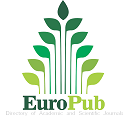Nükleer Caydırıcılık ve Rusya-Ukrayna Savaşının Prospektif Bir Değerlendirmesi
Özet
İnsanların tarihte ilk olarak İkinci Dünya Savaşının sonlarına doğru Amerika Birleşik Devletleri tarafından Japonya’nın Hiroşima ve Nagazaki kentlerine yönelik saldırısıyla tanıştığı nükleer silahlar, özellikle 220,000 sivilin hayatını kaybettiği bu acı tecrübeyle birlikte bir caydırıcı güç unsuru olmuş ve bu silahlara sahip olan ülkelerin tarafından da günümüze kadar bu amaçla kullanılmıştır. Nükleer caydırıcılığın, özellikle 1945-1989 yılları arasını kapsayan ve dönemin iki büyük süper gücü olan Amerika Birleşik Devletleri ile Sovyetler Birliği arasında yaşanan Soğuk Savaş döneminde bir caydırıcılık unsuru olarak en yoğun şekilde kullanıldığı görülmüştür.
2022 yılının Şubat ayında Rusya’nın Ukrayna’ya yönelik başlattığı müdahale sonrası yaşanan gelişmeler ve Batılı ülkelerin Ukrayna’ya yönelik sağladığı geniş destek paketleriyle birlikte Rusya Federasyonu’nun devlet başkanı Vladimir Putin, nükleer silah kullanımının seçenekler arasında olduğunu belirtmiştir. Bu çalışmada, öncelikle kavramsal çerçeve bağlamında nükleer silahlar, nükleer güç, nükleer strateji ve nükleer caydırıcılık gibi kavramlar ele alınacak; akabinde ise nükleer caydırıcılık bağlamında Rusya-Ukrayna savaşı üzerinden prospektif bir değerlendirme gerçekleştirilecektir.
##plugins.generic.paperbuzz.metrics##
Referanslar
Berkowitz, B.D. (1985). Proliferation, deterrence, and the likelihood of nuclear war”, The Journal of Conflict Resolution. 29 (1), 112-136. DOI: https://doi.org/10.1177/0022002785029001006
Brodie, B. (1978). The development of nuclear strategy, International Security, 2(4), 65-83. DOI: https://doi.org/10.2307/2538458
Brodie, B. (2007). Strategy in the missile age, RAND
Brodie, B. (1972). The absolute weapon: atomic power and world order, Books for Libraries Press
Butterworth, R. & Sheldon, J. (2008). Deterrence in space: Responding to challenges to the us in outer space, George Marshall Institute
Culbertson, A. (2022, September 18). Ukraine Crisis: Putin says military drills 'purely defensive' and 'not a threat' as Western Leaders warn invasion imminent, Sky News, https://news.sky.com/story/ukraine-crisis-putin-says-military-drills-purely-defensive-and-not-a-threat-as-western-leaders-warn-invasion-imminent-12545284, (Retrieved 14 December 2022)
Deep-rooted Russian fear of the West has fuelled Putin’s invasion of Ukraine, The Conversation, (3 March 2022), https://theconversation.com/deep-rooted-russian-fear-of-the-west-has-fuelled-putins-invasion-of-ukraine-178351, (Retrieved 26 February 2022)
Freedman, L (2003). Evolution of nuclear strategy reflect changes in the post–Cold War period up to the early 2000s, in the evolution of nuclear strategy., 3rd ed., Palgrave Macmillan
Freedman, L.D. (2002). ‘Nuclear strategy’. Encyclopedia Britannica, https://www.britannica.com/topic/nuclear-strategy. (Retrieved 1 March 2023)
Gallucci, R. L. (2006). Averting nuclear catastrophe: Contemplating extreme responses to US vulnerability, Annals of the American Academy of Political and Social Science, 607 (1), 51-58. DOI: https://doi.org/10.1177/0002716206290457
Global Zero U.S. Nuclear Policy Commission (2012, May). Global zero u.s. nuclear policy commission report: modernizing US nuclear strategy, force structure and posture, Global Zero
Gray, C. (2009). National security dilemmas: Challenges & opportunities, Potomac Books, Inc.,
Gray, C. (2011). The Strategy Bridge: Theory for Practice, Oxford University Press
How much military support have Western countries provided to Ukraine, what weapons have been sent?, Euronews, 10 January 2023, https://tr.euronews.com/2023/01/10/batili-ulkeler-ukraynaya-ne-kadar-askeri-destekte-bulundu-hangi-silahlar-gonderildi, (Retrieved 12 January 2023)
Jervis, R. (1979). Deterrence theory revisited. World Politics, 31(2), 289–324. DOI: https://doi.org/10.2307/2009945
Jessie, Y. (2002, December 8)). Ukraine war is going to 'take a while', Putin says as he warns nuclear risk is increasing", CNN World, https://edition.cnn.com/2022/12/07/europe/putin-ukraine-russia-nuclear-intl-hnk/index.html, (Retrieved 3 October 2022)
Kasapoglu, C. (2022, September 26). The west's misconception of Russia on the nuclear threat, Anadolu Agency, https://www.aa.com.tr/tr/analiz/nukleer-tehdit-konusunda-batinin-rusya-yanilgisi/2694615, (Retrieved 15 January 2023)
Kissinger, H. (1957). Nuclear weapons and foreign policy, Council on Foreign Relations by Harper
Klein, J. J. (2012). Deterring and dissuading nuclear terrorism. Journal of Strategic Security. Vol.5, pp.15-30, http://scholarcommons.usf.edu/jss/vol5/iss1/6. (Retrieved 15 January 2023) DOI: https://doi.org/10.5038/1944-0472.5.1.2
Klein, J. J. (2014, November 25). The case for tactical nuclear weapons, International Relations and Security Network, https://www.files.ethz.ch/isn/187842/ISN_185683_en.pdf, (Retrieved 12 October 2022)
Klein, J. J (2014). Towards a better u.s. nuclear strategy, Journal of Strategic Security, 7 (3), 84-94. DOI: https://doi.org/10.5038/1944-0472.7.3.5
Lebow, R. & Stein, J. G. (1989). rational deterrence theory: i think, therefore i deter, World Politics, 41(2), 208–224 DOI: https://doi.org/10.2307/2010408
Leveringhaus, N. (2018). Beyond 'hangovers': The new parameters of post–Cold War nuclear strategy.", New directions in strategic thinking 2.0: Anu strategic & defence studies centre's golden anniversary conference proceedings., Ed. Gleen R. Acton, ANU Press, 77-90. DOI: https://doi.org/10.22459/NDST.07.2018.07
Libicki, M. (2009). Cyberdeterrence and Cyberwar. RAND Corporation
Lodal, J. (1980). Deterrence and Nuclear Strategy. Daedalus, 109(4), 155-175.
Marsh, Sarah and Madeline Chambers (2022, February 22). Germany freezes Nord Stream 2 gas project as Ukraine crisis deepens, Reuters, https://www.reuters.com/business/energy/germanys-scholz-halts-nord-stream-2-certification-2022-02-22/, (Retrieved 21 December 2022)
Morgan, P. (2003). Deterrence Now, Cambridge University Press DOI: https://doi.org/10.1017/CBO9780511491573
Narang, V. (2014). Nuclear Strategy in the modern era: Regional powers and international conflict, Princeton University Press DOI: https://doi.org/10.23943/princeton/9780691159829.001.0001
NATO, Deterrence and Defence Posture Review (2012)., https://www.nato.int/cps/en/natolive/official_texts_87597.htm , (Retrieved 25 May 2019).
Nichols T, Stuart D., & McCausland J.D. (2012). Tactical Nuclear Weapons and NATO., Army War Coll Strategic Studies Institute DOI: https://doi.org/10.21236/ADA560710
Pellecchia E., Antonini, R., Bottai A. & D'Alessandro, A. (2014). Total nuclear disarmament: ethical and moral issues, Global Bioethics, 25:2, 136-146 DOI: https://doi.org/10.1080/11287462.2014.924724
Roberts, B. (2016). The case for us nuclear weapons in the 21st century, Stanford University Press DOI: https://doi.org/10.1515/9780804797153
Royner, J. (2018). Was there a nuclear revolution? Strategy, grand strategy and the ultimate weapon" https://warontherocks.com/2018/03/was-there-a-nuclear-revolution-strategy-grand-strategy-and-the-ultimate-weapon/, (Retrieved 8 October 2022)
Schelling, T. (1966). Arms and Influence, Yale University Press
Schelling, T. (1980). The strategy of Conflict, Harvard University Press
Schultz G., Perry W., Kissinger H. & Nunn S. (2008, January 15). 'Toward a nuclear-free world', Wall Street Journal, www.nti.org/media/pdfs/NSP_op-eds_final_.pdf?_= 1360883065, (Retrieved 15 November 2022).
Walton, C. D. (2010). The second nuclear age: nuclear weapons in the twenty-first century, in Baylis, J., Gray, C. and Wirtz, J. (eds) Strategy in the contemporary world (third edition), Oxford University Press, 208-225.
Tétrault-Farber, G. & Balmforth, T. (2021, December 17)). Russia demands NATO roll back from east europe and stay out of ukraine, Reuters, https://www.reuters.com/world/russia-unveils-security-guarantees-says-western-response-not-encouraging-2021-12-17/, (Retrieved 21 December 2022)
“The effects of nuclear weapons”, Atomic Archieve, http://www.atomicarchive.com/Effects/index.shtml, (Retrieved 4 October 2022)
Tow, W. T. (2014). the nuclear waltz: rational actors, deterrence and nuclear non-proliferation, Australian Journal of Political Science, 49(3), 541-546. DOI: https://doi.org/10.1080/10361146.2014.937371
Treisman, R. (2022, March 1). Putin's Claim of Putin's claim of fighting against Ukraine 'neo-Nazis' distorts history, scholars say, NPR, https://www.npr.org/2022/03/01/1083677765/putin-denazify-ukraine-russia-history, (Retrieved 10 December 2022)
Tzu, S. (1971). The art of war, translated by Samuel B. Griffith, Oxford University Press
“Ukraine: UN General Assembly demands Russia reverse course on ‘attempted illegal annexation’”, UN News, 12 October 2022, https://news.un.org/en/story/2022/10/1129492, (Retrieved 10 December 2022)
Weaver, C. (2022, October 2). "NATO's jens stoltenberg warns Russia of severe consequences if it uses nuclear weapons", Financial Times, https://www.ft.com/content/36ca9f0b-d287-47ac-8944-36171dbd9a10, (Retrieved 13 January 2023)
Will Putin Use Nuclear? (2022, September 25). CNN Turk, https://www.cnnturk.com/dunya/putin-nukleer-kullanir-mi?page=1, (Retrieved 13 January 2023)
Wirtz, James J. (2012). Deterring the weak: problems and prospects, Proliferation Papers, No.43, nstitut Francais des Relations Internationales, https://www.ifri.org/en/publications/enotes/proliferation-papers/deterring-weak-problems-and-prospects (Retrieved 15 January 2023).
Wirtz, J. (2018). How does nuclear deterrence differ from conventional deterrence? Strategic Studies Quarterly, 12(4), 58-75.






















